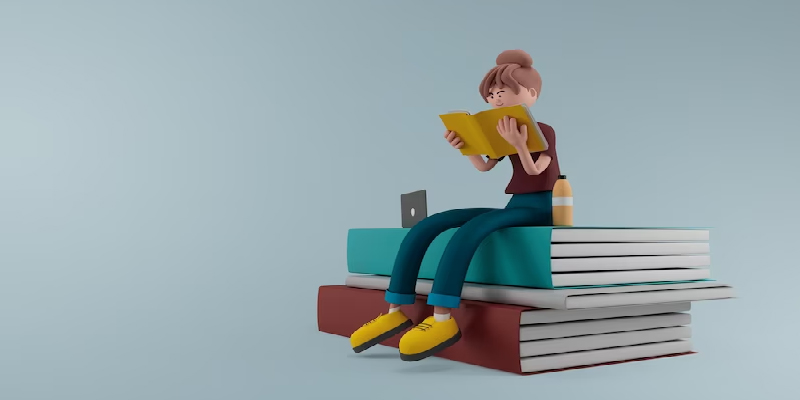Einstein once said, “Education is what stays with you even after you’ve forgotten everything you learned in school.” Via 3D Animation, the educational sector can have a lasting effect on people’s minds.
In schools and other learning places, e-learning has helped students remember the information as a story for longer.
Using 3D graphics, you can show the same information in a way that makes people learn creatively. Learning is now easy and fun because students enjoy instructional videos and hands-on tasks.
In this blog, you’ll explore using captivating 3D Animation that a reliable animated video and 3D animation company offers. By reading this blog, you can significantly enhance educational content.
Benefits Of Using 3D Animated Content In the Education Sector

A survey found that most students lose interest in school if they need help understanding the ideas. They can learn complicated ideas more quickly because of 3D graphics. There has been a significant evolution in teaching methods and discussing various subjects from the past to the present. Learning experiences have better in terms of engagement, interaction, and effectiveness.
The rise of STEM education and the use of 3D Animation plays a significant role in making learning for students and teachers easy and creative. It would be fun to learn even in online classes.
Simple To Remember
If using an interactive way of teaching, students can easily talk about how well they remember their learning. After COVID-19, online schooling is the most recent change. If the lesson doesn’t include virtual labs and games, it can be challenging for some students to remember the subject. Animetus gives its customers the best animation tools and professional animation services to help them improve mixed learning.
An Increase In Student Interest

Reading can be dull at times. Digital learning has many benefits; one is keeping students interested and on task. Students are likelier to stay interested in a subject if it has multimedia material and uses new teaching technology. Medical areas have used 3D Animation as a way to teach for a long time. Some excellent teaching tools make things easier to understand by using 3D graphics.
Which Kind Of Educational Content Can Profit From 3D Animation?

Numerous different types of educational content have found success with 3D Animation. For instance, it may be challenging to discover engineering schools with up-to-date facilities and knowledgeable instructors. An excellent choice for virtual labs is 3D Animation. With remote access to simulation-based experiments in these labs, students can learn and grasp complicated ideas well.
Another use for 3D Animation is in instructional films. When conventional teaching methods are not available, they are helpful learning tools. Online training and instructional movies are more engaging and instructive, using multimedia techniques and 3D Animation. This makes them more accessible for students to access.
You may also use many free 3D animated virtual labs and models online. With the use of these technologies, people can learn more about a variety of topics while having fun.
- View the animated 3D movie infographic about Bitcoin trading or the narrative-driven infographic. By attentively viewing it, you become thoroughly knowledgeable about cryptocurrencies.
In some learning environments, 3D Animation can assist students in having more immersive experiences. They can better retain what they have learned and understand complex concepts. By giving pupils more options and enhancing their learning experiences, you can use this technology in the educational world.
Resources/Machines For 3D Animations Used In Educational Content
You can now join different online learning courses that provide access to various animation alternatives.
- Adobe After Effects: Adobe After Effects is a unique tool among motion graphics and visual effects creators, with a good rating. It offers abundant opportunities for producing breathtaking 3D animations and artistic masterpieces. The possibilities can be 3D Modeling and Texturing, Particle Systems and Simulation, Visual Effects, and Compositing and Integration with other Adobe Creative Cloud Apps.
- Animaker: It is suitable for beginners looking for an easy way to create animated videos and slideshows; Animaker is the best tool for you. Its user interface is intuitive and easy to navigate to gain technical skills.
- Vyond: Many companies utilize Vyond, an animation tool, to produce animated content for marketing, sales, and education. It provides an easy way to create engaging instructional animations with various templates, actors, and situations.
- Renderforest: This branding tool is an all-in-one solution, even for those with little design experience. Users can create various content, including 3D animations, thanks to its user-friendly interface and customizable themes and components, like Templates, Scenes and Transitions, Text and Typography, Audio and Sound Effects and 3D Objects and Effects.
These are only a few of the software or technologies used in education. They can help you improve the 3D Animation in your educational materials.
You can discover companies that excel in 3D animation skills and techniques in this digital world. Animetus, the top 3D animation company, provides the best 3D and 2D animation services and has the best-animated video creators. Contact us now.
What Are The Best Ways To Use 3D Animation In The Classroom?
Merging 3D Animation in teaching content can be beneficial, but it is vital to use it properly. Consider these essential aspects when operating 3D Animation as a teaching resource to ensure effectiveness.
- Choose related information: Make decisions based on what will keep you interested and help you learn. Let’s imagine you want to use 3D Animation to teach students about human anatomy in biology. A virtual tour of the human body is possible. Examining other systems, such as the respiratory or circulatory systems, is an option for students. They can gain knowledge of the interactions between organs and structures.
- Select the appropriate animation style: Select a type of Animation, such as 2D, 3D, or motion graphics, that complements the content nicely. In a history lesson about ancient societies, you can use 2D cartoon animation to illustrate significant scenes and figures. You can animate Historical figures to make the information more engaging and straightforward.
- Use Animation intelligently: To enhance interactive models or learn about concepts, use Animation intelligently. Use a 3D animated simulation of Newton’s laws of motion for an interactive physics class. Students can move various objects to demonstrate how forces and movements interact. Seeing the concepts in action helps you comprehend them more fully.
- Ensure the website is usable: Make sure the site is accessible by making the graphics compatible with various hardware. Subtitles and closed captions are additional options. For 3D cartoons, closed captions can be made available in various languages so everyone can see them. Additionally, the animations should function across various hardware and software platforms for use by kids on computers, tablets, and phones.
- Ensure simplicity. Make sure all of your visuals are crisp, clear, and understandable. Use 3D Animation in a geometry class to demonstrate the appearance and construction of geometric forms. Clarify and simplify the subject matter. Concentrating on the Animation’s key components would be preferable rather than providing excessive information. For instance, an animation could show how to build and manipulate a cube. To help people visualize its structure, you might draw attention to its faces, edges, and vertices.
- Increasing immersion and interaction Facilitate communication between individuals and object exploration. For instance, students can employ 3D Animation when studying worldwide landmarks in a geography class. Notable locations like the Great Wall of China and the Eiffel Tower are accessible to them. Students can use the video to play around and flip the structures. They can discover more about the buildings’ significance in history and culture.
- Try out some gestures and ask folks what they think. To create animations, tweak them, test them, and get instructor and student feedback. A small sample of students can participate in a pilot test before 3D animations are included in a chemistry course about chemical reactions. Ask them about the animations in their comments to learn if they found them entertaining and helpful.
Conclusion
In the end, 3D Animation has a lot of benefits for teaching videos. It keeps students interested, clears up confusing topics, and helps them remember what they’ve learned. Also, it is inexpensive for teachers. They only have to share animated examples once to make them available to students. You will save time and money.
Using 3D Animation in the classroom can change how to train the staff, the content discussion, and teaching topics. Given all of its features and requirements, there is no question that 3D Animation can be the future of the educational world. So approach us and get the most out of it.
Call a reliable 3D animation company now to animate your educational content. Use our animated videos and 3D or2D animation services. Enhance your instructional content today for a world of exciting learning.

